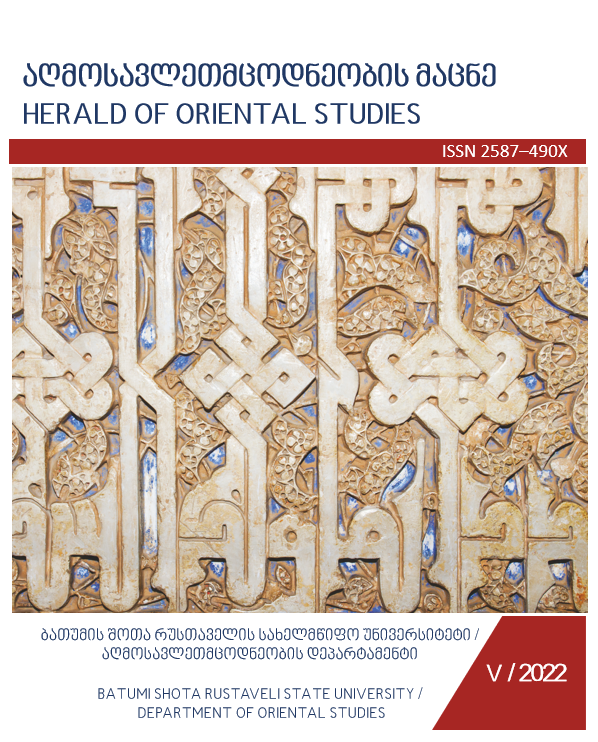-sA სუფიქსის ფუნქცია თურქულ ენაში
Function of the suffix -sA in Turkish
Author(s): Giga KamushadzeSubject(s): Language studies, Language and Literature Studies, Morphology, Philology, Turkic languages
Published by: ბათუმის შოთა რუსთაველის სახელმწიფო უნივერსიტეტი, ჰუმანიტარული მეცნიერებატა ფაკულტეტის აღმოსავლეთმცოდნეობის დეპარტამენტის „ელექტრონული ჟურნალი“.
Keywords: Grammar; Conditional Mood; -sA suffix;
Summary/Abstract: In this article we have investigated the suffix -sA, which belongs to the form of indicative mood and and is referred to in grammar textbooks as the conditional mood which has gone through several stages of formation: In Old Turkish it was used with the form of -sar, - ser. Later, with the loss of the sound-r, it took the form of -sa, -se. From Middle Turkish, suffix -sa / -se Formally, has the function of producing two different moods. It should be noted that this situation remains in Turkish today. In terms of form and function, due to the connection of two different suffixes over time, it combined two functions, to express the subjunctive and conditional mood. In Turkish grammar textbooks, it is also used to express subjunctive -conditional mood (dilek-şart). Research has shown that suffix has the function of expressing desire, condition, command, ability, comparison and contrast, » Also, the functions of expressing the condition, differ according to the noun and the verb. Simple and complex sentences, simple and complex verbs are important. Accordingly, the suffix is a function of "desire" in verb phrases, while in simple sentences and simple verb forms it has the function of "condition".
Journal: საერთაშორისო სამეცნიერო ჟურნალი „აღმოსავლეთმცოდნეობის მაცნე“
- Issue Year: 5/2022
- Issue No: 1
- Page Range: 147-155
- Page Count: 9
- Language: Georgian

